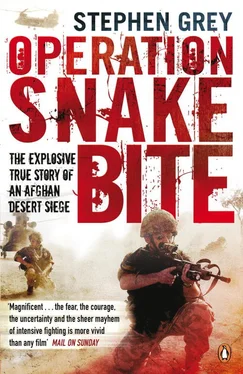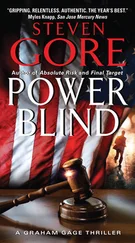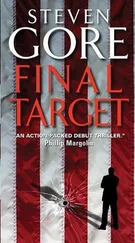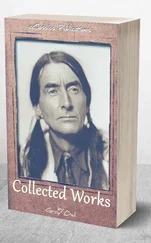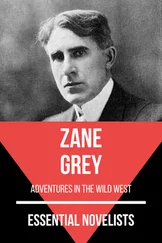Outside Musa Qala, 20 January, 15.30
Lance-Bombardier Ian Wylie and the rest of A Troop panted their way up to the ridgeline after a patrol in the village beneath. There had been reports of enemy in the neighbourhood, but the patrol had passed without incident. It was mid-afternoon and finally getting warm after a freezing cold morning. The heat, as things turned out, was deadly.
At the top, they paused for breath and looked at the view. Before them was a dusty and dry rock-strewn slope down to the wide, flat expanse of the water-fed farmland of the Musa Qala wadi, with the town itself just over 2 miles in front to the left, and the Roshan mobile phone tower standing out on the sharp cliffs opposite. Behind was the undulating brown moonscape of a high desert plateau. Mount Musa Qala, what the soldiers called ‘Mount Doom’, stood towering to the north.
Wylie and the others reached the vehicles they had parked in a tight square in a dip just behind the ridge. C Troop’s vehicles were elsewhere, providing cover on two positions on higher ground.
Wylie got into top cover position, manning the .50 cal machine gun on a WMIK. He had just got back to the Brigade Reconnaissance Force. After driving the WMIK that had struck the mine or explosive device that had killed Jack Sadler in the Musa Qala operation, he had been sent home with minor injuries. He had wanted to return, but, riding now in the position where Sadler had died, he was not comfortable, nervous of another mine going off.
The plan was to head off back into the desert that had long been the BRF’s home. One of the vehicle commanders, Bombardier Danny Kay, moved off. His driver, Trooper Adam Cox, turned his wheel right on full lock. As they circled across the sandy ground towards the edge of the ridge, the front wheel struck a mine. When the smoke cleared, Kay was still in his seat, but in agony. The front of the vehicle had twisted back on to him, shattering the bones in his legs and dislocating his toes. Cox had blast injuries to his legs. The top gunner, Troy Bayliss, was clutching his wrists.
Wylie stared in disbelief, fearing the same nightmare all over again. But Kay, a South African, broke the ice as they carried him out. He started swearing in Afrikaans and then even laughing. He was obviously in agony and needed treatment, but he had had a lucky escape. He was not going to die.
The BRF had lived in the desert around Musa Qala for more than two months, bar a three-day break just after the town was recaptured. But like most of 52 Brigade, they were still barely halfway through their tour.
Fighting had continued. A large British force was still in place, keeping the Taliban out while plans advanced for development in the town. The American paratroopers, 1 Fury, were only just leaving. They and the British had continued fighting in the villages up in the desert between Musa Qala and Kajaki, and in the hostile wadi south towards Sangin. A fortnight previously, 1 Fury’s Sergeant David J. Drakulich, of Reno, Nevada, had been killed down there in an IED blast.
The constant moving and fighting and forever living from their vehicles was beginning to wear down the men of the BRF. After the deaths of Jack Sadler and Lee Johnson, they knew how vulnerable they and their vehicles were.
One of the biggest dangers was the so-called legacy mines left by the Soviets. The intelligence they had on threat maps they carried showed them practically everywhere. But the map was large-scale, 1:100,000. It gave you enough detail to keep you scared, but not enough detail to navigate round the danger. The map showed Soviet mines somewhere near this ridge top, but no real clue of where they were.
* * *
The battery sergeant major, Paul Hodgson, was organizing the rescue. The injured were brought on stretchers a couple of hundred yards along the ridge top to be treated by his vehicle, one of the four-wheel Pinzgauers.
It was obvious now there were mines about. But Hodgson and the stretcher-bearers stayed on the ridge top track, which they judged had effectively been cleared by their movements along it all day. ‘It had been used by locals, which was clearly a good sign,’ he recalled, ‘but there were no recent tracks. No one had been here for a while.’ The metal detectors were also brought out, and the soldiers were checking for other mines.
Hodgson himself walked further up the track and found a good helicopter landing site on flat ground. They had got word by radio of a Chinook that was already up in the Musa Qala area. It was not the Incident Response Team that carried medics but instead had on board a VIP, Major General Jacko Page.
Hodgson popped a green smoke grenade to guide the chopper in. As it came down Kay and the other injured were still being put on to his ‘Pinz’, about 400 yards back. Hodgson radioed back: ‘If you don’t get those casualties on there in the next sixty seconds then it’s going to take off.’
The acting second-in-command, Captain Richard Waddell, was standing close to Hodgson’s Pinz and got the message. He turned to the driver, a twenty-five-year-old corporal, Darryl ‘Daz’ Gardiner, and said, ‘All right, you need to basically go.’ He walked round the back to see the injured on board and then gave Gardiner the thumbs-up and shouted, ‘They’re on. You can go.’
Ever since the mine blast, Gardiner had been busy helping treat the injured. Now, Adam Cox was in his passenger seat, his legs on the dashboard. Cox said that after losing Jack Sadler and now this, ‘I’m not sure how we’re going to cope.’ As he drove off, Gardiner replied: ‘Don’t be daft! You’ll be on the chopper soon – and getting down a warm meal at Bastion!’
Hodgson remembered seeing Gardiner’s vehicle go about 10 yards. Then there was a bang, and he saw Gardiner being thrown from his seat into the sky and landing about 20 yards away. His three tons of Pinzgauer was also flung into the air and spun round 180 degrees.
Hodgson turned towards the Chinook helicopter, the twin rotors of which were still thrashing the air. He made a cutting motion with his hand across his throat, meaning: ‘Just go, leave.’ The chopper roared off, and Hodgson went running back to the disaster. He saw the vehicle, which served as the ammunition resupply store, was now on fire. After what happened after the Sadler mine strike, his first priority would be to douse the flames quickly.
Waddell was so close to the blast that the flash burned the skin off his nose. His vehicle was parked right by. If Gardiner had not hit the mine, it might have been him. ‘The strangest thing was how quickly that vehicle went from being a normal vehicle to being on its side, facing the wrong way and being on fire. You know, it was quicker than the blink of an eye.’
Further along the ridge, Sergeant Jonathan Walton was working his way down with a mine detector. ‘No, this is – it’s not happening!’ he thought. A Fijian soldier was helping him. After seeing Gardiner being blown in the air, Walton asked the soldier, ‘Who was that?’
‘Oh, it’s Daz… He’s gone.’
‘How do you know that? You don’t know. He might be all right. Let’s get up there and see if he’s all right.’
But the deeply religious Fijian said he had seen an angel come out of Gardiner. Walton tried to calm him. He gave him the metal detector to keep him busy.
The three people injured in the first mine strike had now been through a second one. Miraculously, none seemed to have got more physical injuries. The casualties were triaged – a process of working out who needed the most help. Everyone seemed calm. Businesslike.
When one of the medics, Collin Vincent, first saw Gardiner, he found him unconscious but with a weak pulse. Working with Lance-Corporal Peter Langhelt, another medic, and Sergeant Robert Leslie, who had good medical skills, they patched his wounds and tried desperately to get some fluids into his veins.
Читать дальше
